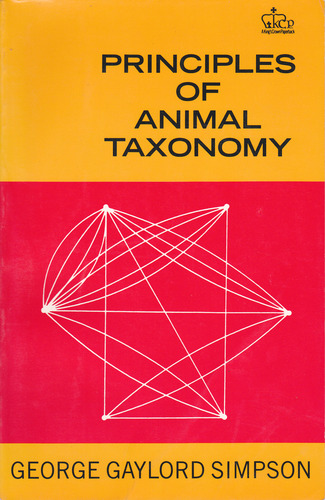Principles of animal taxonomy ebook
Par jasper anna le mardi, juillet 26 2016, 12:34 - Lien permanent
Principles of animal taxonomy. George Gaylord Simpson

Principles.of.animal.taxonomy.pdf
ISBN: 023109650X,9780231096508 | 131 pages | 4 Mb

Principles of animal taxonomy George Gaylord Simpson
Publisher: Columbia University Press
With Darwin's theory, a general acceptance that classification should reflect the Darwinian principle of common descent quickly appeared. We evaluated completeness, accuracy, and historical trend of the taxonomic knowledge on the myrmecophilous ground beetle tribe Paussini (Coleoptera, Carabidae, Paussinae). Tree of Life representations became popular in scientific works, with known fossil groups incorporated. This method of classification has changed over time to reflect and accommodate current thinking in science, but primarily the principle has remained unchanged, grouping animals based on shared characteristics. Arthropods are the most diversified animal group [1, 2]. Scarcely a decade ago, Simpson (1961) matter-of-factly concluded that for the protists "evolutionary classification is not yet practicable. Homologues, natural kinds and the evolution of modularity. Introduction Biology as a science, put the various organisms as its object of study. Cuvier's The Animal Kingdom, Arranged According to its Organization, Serving as a Foundation for the Natural History of Animals, was an attempt to classify the animal kingdom on the basis of comparative anatomy, of which Cuvier's entire classification schema was Using these principles, Cuvier established a taxonomic approach based on comparative anatomy that established correlations between the inner systems that maintained life within an organism. The first significant definitions were developed by Aristotle. Plant, animal and mineral systematics principles were stated by Karl Linney back in the 18th century. At all times, one of the key tasks of biology as a science was to establish the life form classification – systematics, taxonomy. Scientifically, it is called taxonomy and rooted in ancient Greek. New York: Columbia University Press. According to Simpson (“Principles of animal taxonomy”), a taxonomy is a “classification, including bases, principles, procedures and rules”.